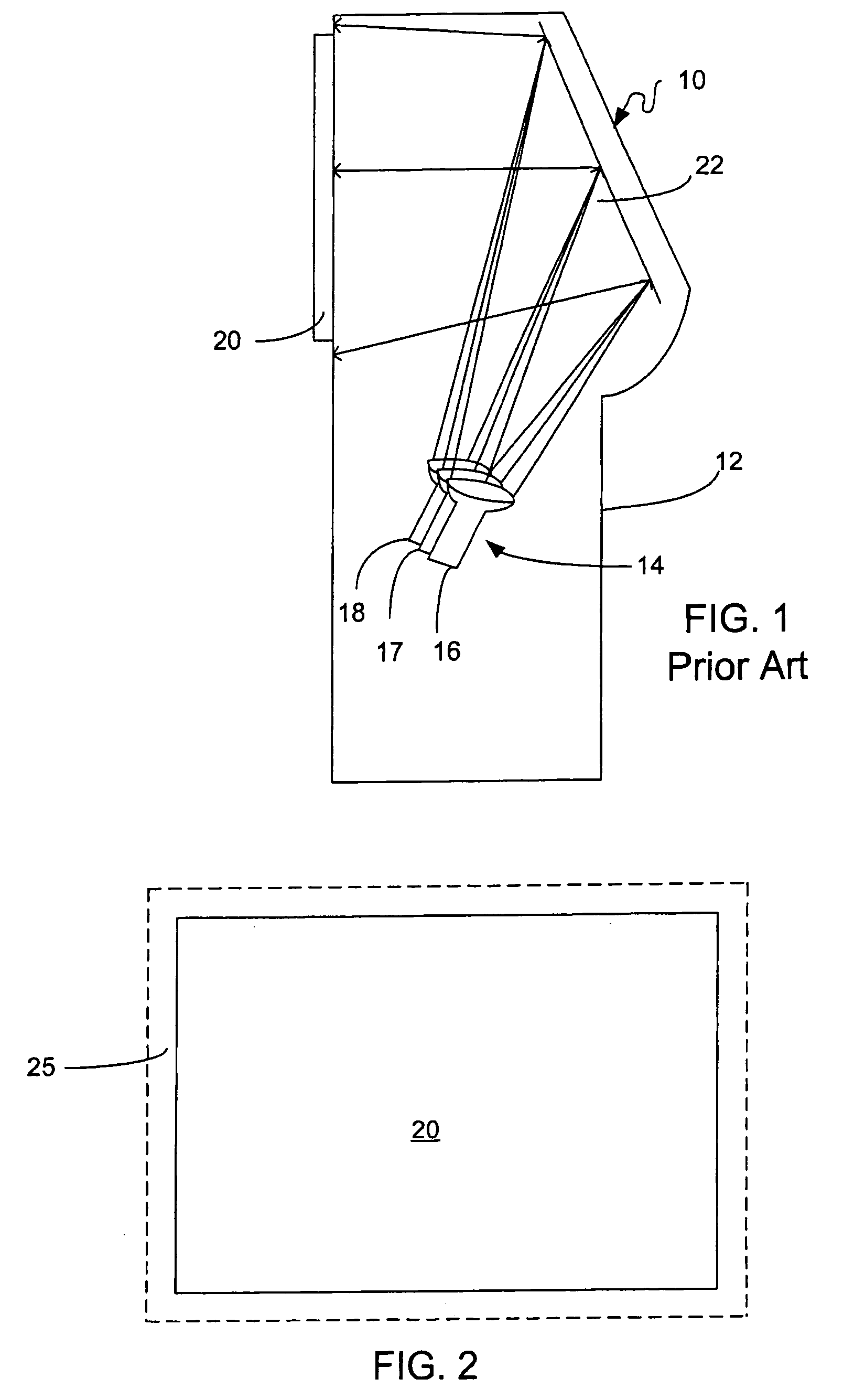Automatic image convergence for projection television systems
a technology of projection television and automatic image convergence, applied in the field of projection television systems, can solve the problems of time-consuming, labor-intensive, tedious and extremely time-consuming, etc., and achieve the effect of facilitating automatic convergence and geometry alignmen
- Summary
- Abstract
- Description
- Claims
- Application Information
AI Technical Summary
Benefits of technology
Problems solved by technology
Method used
Image
Examples
Embodiment Construction
[0021]The systems and methods described herein provide for automatically aligning convergence and geometry in projection systems such as a CRT projection television (PTV) and the like, and other projection television and display systems. More particularly, the automatic convergence system of the present invention preferably includes a charge coupled device (CCD) camera, preferably a monochrome CCD camera, mounted inside the light box of the PTV. The CCD camera is preferably located in a position that allows it to focus on all areas of the inside of a Fresnel lens of a projection screen assembly and over-scanned regions of the PTV. The translucent properties of the Fresnel lens are such that an image projected from the front of the projection screen also appears or is reflected on the inside of the Fresnel lens where it can be captured by the CCD camera. In operation, signals from the CCD camera corresponding to test patterns projected onto the Fresnel lens are analyzed by a logic un...
PUM
 Login to View More
Login to View More Abstract
Description
Claims
Application Information
 Login to View More
Login to View More - R&D
- Intellectual Property
- Life Sciences
- Materials
- Tech Scout
- Unparalleled Data Quality
- Higher Quality Content
- 60% Fewer Hallucinations
Browse by: Latest US Patents, China's latest patents, Technical Efficacy Thesaurus, Application Domain, Technology Topic, Popular Technical Reports.
© 2025 PatSnap. All rights reserved.Legal|Privacy policy|Modern Slavery Act Transparency Statement|Sitemap|About US| Contact US: help@patsnap.com



